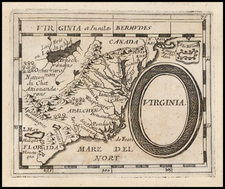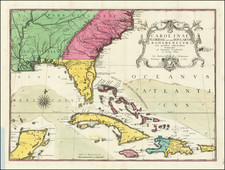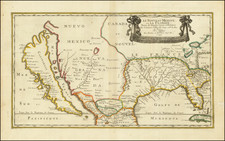Detailed battle plan of the Battle of Guildford Court House, fought on March 15, 1781, from Banastre Tarleton's History of the Campaigns of 1780 and 1781 in the Southern Provinces of North America…, published by Cadell in 1787.
Shows the advances, retreats and positions of the Americans and British, the court house and roads relevant to the battle. The only obtainable contemporary plan of the battle of Guildford House.
The Battle of Guilford Court House was fought at a site which is now in Greensboro, North Carolina, during the American Revolutionary War. A British force under the command of Lieutenant General Charles Cornwallis defeated Major General Nathanael Greene's American forces. The British Army, however, sustained such heavy casualties that the result was a strategic victory for the Americans.
Despite the relatively small numbers of troops involved, the battle is considered pivotal to the American victory in the Revolution. Before the battle, the British appeared to have had great success in conquering much of Georgia and South Carolina with the aid of strong Loyalist factions, and thought that North Carolina might be within their grasp. In fact, the British were in the process of heavy recruitment in North Carolina when this Battle severely blunted the British recruiting drive.
Then Liuetenant-Colonel Tarleton was a very active participant in the battle. He first led the British Legion against Light Horse Harry Lee's Dragoons in one of the first skirmishes among other actions at Guildford Courthouse.
In the wake of the battle, Greene moved into South Carolina, while Cornwallis chose to march into Virginia and attempt to link up with roughly the forces commanded by British Major General Phillips and Benedict Arnold. This allowed Greene to unravel British control of the South, while leading Cornwallis to Yorktown and eventual surrender.
General Sir Banastre Tarleton, 1st Baronet, GCB (1754 - 1833), was a British soldier and politician. He served during the American War of Independence. He became the focal point of a propaganda campaign claiming that his men had slaughtered surrendering Continental Army troops at the Battle of Waxhaws also known as the Waxhaw Massacre. In the biography The Green Dragoon: The Lives of Banastre Tarleton and Mary Robinson by Robert D. Bass (published in 1952), he was given the sobriquet 'Bloody Ban' and 'The Butcher', which has carried over into popular culture as being his nickname of the day, a moniker given to him for rebel propaganda purposes.
He was hailed by the Loyalists and British as an outstanding leader of light cavalry and was praised for his tactical prowess and resolve, even against superior numbers. His green uniform was the standard of the British Legion, a provincial unit organized in New York in 1778. Tarleton was later elected a Member of Parliament for Liverpool, and became a prominent Whig politician. Tarleton's cavalrymen were frequently called 'Tarleton's Raiders'.












![Dominia Anglorum in America Septentrionali Specialibus Mappis Londini primum a Mollio… [4 maps--New England; Chesapeake, Georgia, Carolinas & Florida; and Nova Scotia…]](https://storage.googleapis.com/raremaps/img/small/60331.jpg)

![[Carolinas, Virginia, the Chesapeake, Pennsylvania, New York]](https://storage.googleapis.com/raremaps/img/small/71479.jpg)